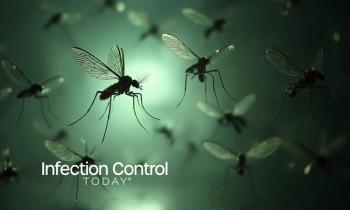
Researchers Discover How the Flu Virus 'Tells Time'
Scientists have discovered that that the flu virus can essentially tell time, thereby giving scientists the ability to reset the virus clock and combat it in more effective ways. According to researchers at the Icahn School of Medicine at Mount Sinai, the flu knows how much time it has to multiply, infect other cells, and spread to another human being. If it leaves a cell too soon, the virus is too weak. If it leaves too late, the immune system has time to kill the virus.
The flu virus staying in a cell too long (left) and leaving too soon (right). Image courtesy of Mount Sinai School of Medicine.
Scientists have discovered that that the flu virus can essentially tell time, thereby giving scientists the ability to reset the virus clock and combat it in more effective ways. According to researchers at the Icahn School of Medicine at Mount Sinai, the flu knows how much time it has to multiply, infect other cells, and spread to another human being. If it leaves a cell too soon, the virus is too weak. If it leaves too late, the immune system has time to kill the virus.
The finding provides a novel design platform for the flu vaccine and could lead to new antiviral drugs that make this viral clock dysfunctional. The research, led by Benjamin tenOever, PhD, the Fishberg Professor of Microbiology at Mount Sinai, is published in the Jan. issue of Cell Reports.
With only 10 major components, the virus needs to steal most of its resources from the human cell in order to multiply. During this process, the virus often trips various alarms that equate to our immune system detecting, and then killing the virus. tenOever hypothesized that the virus must have a mechanism in place to keep track of how much time it has to steal these resources before the immune system springs into action. If the virus moves too fast, it will not have time to multiply. If it moves too slowly it will be stopped by the immune response. tenOever and his team wanted to find out how the virus knows exactly how much time it needs to multiply and move on.
We knew that the virus has about eight hours in a cell to create enough copies of itself to continue spreading before the cells antiviral alarm would be set off, said tenOever. On a broader level, the virus needs two days of continuous activity to infect enough cells to permit spread to another human being. We wanted to tap into the flus internal clock and find a way to dismantle it to prevent the spread of the virus.
tenOever and his team examined the processes that control the timing of infection. This research led to the discovery that, by relying on a quirk in our cell biology, the virus slowly accumulates one particular protein that it needs to exit the cell and subsequently spread to other cells, and eventually other humansjust in time before the immune system is activated.
Armed with this knowledge, tenOever and his team manipulated this timer by making the virus acquire this protein too fast, which caused flu to exit the cell too quickly and not have time to make more viruses. The next step was to manipulate the process to make flu acquire this protein too slowly, giving the immune system time to launch a response before the virus could escape, thereby killing the virus and preventing infection.
Â
tenOever hopes this discovery will lead to new antiviral drugs that target the viruss internal clock and that it will provide a new design platform for the flu vaccine.
Currently, individuals have the option to receive a shot, which delivers dead virus through a needle, or a nasal spray, which contains live but weakened flu virus. Although the nasal spray vaccine is believed to be more effective than the shot, it is only FDA approved for individuals between the ages of 2-49. With data from the Cell Reports study, scientists will be able to develop a new type of spray vaccine that is composed of a virus with a defective clock. This new option for protecting against flu may prove safer for the very old and very young who are unable to receive the current spray vaccine.
This study was supported by the National Institutes of Health (grant numbers A1093571 and A1080624), Mount Sinai School of Medicine Mechanisms of VirusHost Interactions T32 training grants, the Pew Charitable Trust, and the Burroughs Wellcome Fund.
Source: Mount Sinai Medical Center
Newsletter
Stay prepared and protected with Infection Control Today's newsletter, delivering essential updates, best practices, and expert insights for infection preventionists.





